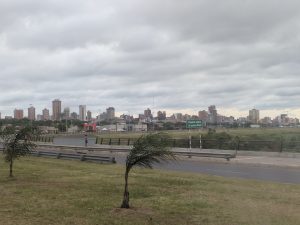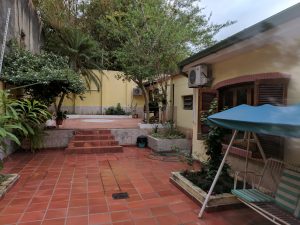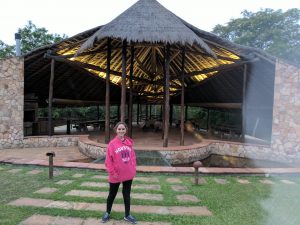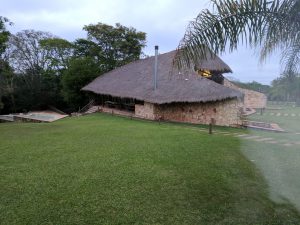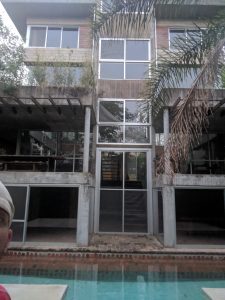Why Visit Paraguay? A Unique History
Why Visit Paraguay? A Unique History
Obtaining the visa, all about the history, and Paraguay today.
Most Meaningful: Paraguay’s unique history makes visiting a very different social and cultural experience to visiting the rest of South America.
Travel Tips: Know your visa requirements in advance.
Talking to fellow travellers ‘doing’ South America, they all said not to bother with Paraguay. It was boring compared to the neighbouring countries, and the visa is a pain in the butt to get. But I’ve never listened to this kind of talk. I never wanted to just replicate the same South America trip as thousands of others, taking the same photos at the same places. Plus, from what I learned about Paraguay’s unique history, it offers something completely different from much of the rest of South America.
Paraguay Visa
U.S. passport holders can actually get a visa on arrival to visit Paraguay, but only if they arrive at Silvio Pettirossi International Airport near Asunción, and it costs $165 (at time of writing). If you are arriving via any other route (or think better to be safe than sorry), you need to get a visa at a Paraguayan embassy, for the same cost. If you are already in South America this should be relatively easy as there are embassies in all the major capitals. For me, my visa just cost a day at the embassy in Uruguay, and of course the relatively hefty fee.
History: Locals befriend the Spanish
The singular history of Paraguay means that it has a unique culture that should be enough to fascinate any international visitor.
While several tribes are native to the region, the Guarani were the most populous. They also managed to survive the arrival of the Spanish, as they welcomed the Spanish into the area and formed an alliance with them in the hope that the Spanish would help them fight neighbouring tribes, with which they were always at war. Like many of the tribes in the region, the Guarani engaged in cannibalistic rituals that involved eating their defeated enemies after battle.
Perhaps another reason why the Guarani got on so well with the Spanish was that they were a polygamous society. It was not uncommon for chieftans to have 20 or 30 wives, and to share those wives as they saw fit. So when Spanish men arrived in the 1500s they received quite a warm welcome, and quickly mixed with the local Guarani. While European women would eventually follow their men to South America, the overall result was a largely mixed population of mestizos, alongside a more isolated creole population that arrived from Brazil. Children grew up speaking their mother’s tribal tongue, but within Spanish Catholic culture.
History: Enforcing Diversity
This natural evolution of the local order became law in the early 19th century. Paraguay declared independence from Spain in 1811, without much objection from the Spanish themselves as they were busy dealing with Napoleon in Europe, and Paraguay’s under-developed economy and distance from coastal ports made it one of their less desirable territories. José Gaspar Rodríguez de Francia, also known as El Supremo, soon became the dictator of the country. He believed in a Utopian state, a republic of equals, in which there was no private property, and only communal prosperity.
As part of his plan to foster equality, Francia worked to eradicate what existed of a Spanish elite. He did this by forbidding marriage between Europeans, demanding that European men marry native women, ensuring a mix of race and prosperity. While Francia’s ideals were grand, their execution was managed by trampling on human rights and creating a police state based on espionage that might make us think of post WWII East Germany. For example, he sealed the country’s borders and executed anyone found trying to leave.
Francia’s actions laid the foundation for modern Paraguayan society, in which both Spanish and native Guarani roots are equally strong, but at a huge cost [find out more].
It is also worth noting that Francia’s Utopian ideals did not extend to the 50,000 slaves living in the country, who had mostly arrived from Brazil. In 1842, his successor did pass the Law of the Free Womb, which guaranteed that the children of slaves would be free at the age of 25. The direct result of this was to see slave prices plummet and slave populations soar as the birth rate skyrocketed. Whether this was because the slaves themselves saw a better future for their children, or slave owners were looking forward to not having to pay for the upkeep of older slaves, who knows. Regardless, it led to an ongoing divide between the new, majority, homogenous mestizos and the black creole minority.
History: Fighting their way to the Future
In 1864 Paraguay was plunged into war. Paraguay had long had enmity with the rival Spanish state of Argentina, and was also very suspicious of their neighbour Brazil. In 1864, when Brazil interfered in conflicts in another neighbouring country, Uruguay, Paraguay’s dictatorial state took this as a threat to their own independence. They seized a Brazilian warship, and then invaded Mato Grasso, a province of Brazil. This resulted in a cascade of events that led to the War of the Triple Alliance, so Paraguay against Argentina, Brazil and Uruguay.
With a population of only 450,000, to the alliance’s roughly 11 million, Paraguay was more than outgunned, even when they started conscripting children as young as 10 to fight. By 1870 their population was decimated, they lost much of their territory to neighbouring countries, and they were subjected to foreign rule until the 1904 revolution.
Following the 1904 revolution, the country found itself in the hands of a series of Paraguayan military dictators that continued to war with their neighbours and to suppress freedom at home to maintain their power. It was only in June 1992 that the Paraguayan constitution established a democratic system of government. Discover the history of Paraguay for yourself while there by visiting the Museo de las Memorias.
Paraguay Today
The result of this history is a country dominated by the mestizo race and culture, with relatively little outside influence as this was shunned in recent centuries. Consequently, today, Paraguay is one of the poorest countries in South America, with a third of the population living below the poverty line. But they do not share the anger and despair with their government that we see in many other South American countries, despite their government’s record for corruption.
In general, Paraguayan people still strongly believe in Francia’s ideals of equality and providing for the many rather than letting wealth stay in the hands of the few, despite the high price that they have paid for this ideal over the years. History largely explains Paraguay’s ‘Small Country, Big Help’ philosophy, the welcoming attitude of the locals, and the high visa price!

